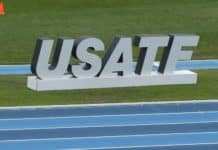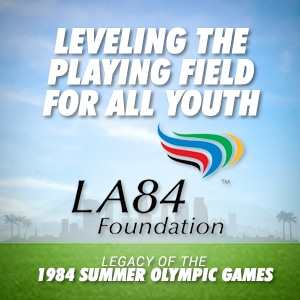(★ Friends: Thank you! With 52 donations over the past few weeks, you have covered our half-yearly server and support costs. The next bill is coming, so if you would like to help, please donate here. Thank you to all of our readers; your interest and support is the reason this site continues. ★)
The trove of financial data released last week by the U.S. Olympic and Paralympic Committee included a novel new report called the “Sport Benefits Statement.” This compilation displayed the total amount of money – direct and indirect – poured into each U.S. National Governing Body in 2019. The components included:
(1) High Performance Programs
This includes direct athlete stipends, prize money given for Pan American Games performances, coaching education, health insurance and medical services, sports science and “High Performance Grants,” a sum given to each NGB for athlete support, coaching support, travel to competitions and training camps.
(2) Olympic & Paralympic Competitions
This was, in 2019, travel and support for the Pan American Games in Lima, Peru.
(3) Athlete Training Facilities
This is for athlete stays, based on an averaged daily user rate, at the USOPC Training Centers in Colorado Springs, Colorado or Lake Placid, New York, or the facilities at the former USOPC training center in Chula Vista, California, or the Utah Olympic Legacy sites in and around Salt Lake City, Utah.
(4) Athlete & NGB Foundational Programs
Covers administrative support and NGB rent if on the USOPC campus, athlete career education, grassroots coaching and development programs and collegiate program outreach.
(5) Team USA Media & Promotion
Communications support, including public relations, digital and Web programming, licensing and international relations grants for advancing U.S. candidatures within the International Federations.
As it turns out, the amounts provided to some of the NGBs were far beyond the direct-grant amounts that are reported on the USOPC’s Form 990 tax return. There were 61 Sport Benefits Statements issued; for the 33 permanent summer Olympic NGBs and eight permanent winter Olympic NGBs, in order of total support received:
● $10,485,866: Track & Field: $3,796,780 direct; $6,689,086 additional
● $7,435,980: Swimming: $3,548,924 direct; $3,887,056 additional
● $5,000,793: Wrestling: $1,791,846 direct; $3,208,947 additional
● $4,872,696: Volleyball: $2,038,587 direct; $2,834,109 additional
● $4,252,369: Gymnastics: $2,227,033 direct; $2,025,336 additional
● $4,036,847: Rowing: $1,704,229 direct; $2,332,618 additional
● $3,870,948: Cycling: $2,211,900 direct; $1,659,048 additional
● $3,514,053: Rugby: $1,349,481 direct; $2,164,572 additional
● $3,294,415: Shooting: $1,950,373 direct; $1,344,042 additional
● $2,965,313: Triathlon: $1,162,334 direct; $1,802,979 additional
● $2,758,203: Boxing: $1,047,588 direct; $1,710,615 additional
● $2,648,440: Water Polo: $1,375,391 direct; $1,273,049 additional
● $2,115,139: Archery: $868,428 direct; $1,246,711 additional
● $1,975,922: Sailing: $1,356,198 direct; $619,724 additional
● $1,975,071: Fencing: $1,052,920 direct; $922,151 additional
● $1,868,937: Hockey: $1,096,307 direct; $772,630 additional
● $1,847.210: Basketball: $1,295,890 direct; $551,320 additional
● $1,771,857: Equestrian: $1,358,940 direct; $412,917 additional
● $1,611,337: Diving: $1,095,908 direct; $515,429 additional
● $1,339,490: Judo: $788,618 direct; $550,872 additional
● $1,295,594: Football: $750,000 direct; $545,594 additional
● $1,188,257: Softball: $626,876 direct; $561,381 additional
● $1,156,248: Taekwondo: $673,050 direct; $483,198 additional
● $630,266: Weightlifting: $431,731 direct; $198,535 additional
● $613,743: Handball: $270,893 direct; $342,850 additional
● $544,237: Table Tennis: $317,767 direct; $226,470 additional
● $365,821: Canoeing: $171,280 direct; $194,541 additional
● $322,042: Tennis: $50,000 direct; $272,042 additional
● $305,518: Artistic Swim: $195,941 direct; $109,577 additional
● $280,226: Badminton $137,172 direct; $143,054 additional
● $274,082: Modern Pent.: $88,003 direct; $186,079 additional
● $62,712: Golf: $28,400 direct; $34,312 additional
● $0: Baseball (yes, really: $0)
Winter:
● $9,307,196: Ski & Snowboard: $6,315,000 direct; $2,992,196 additional
● $3,854,179: Bob & Skeleton: $2,066,163 direct; $1,788,016 additional
● $3,055,466: Ice Hockey: $1,649,251 direct; $1,406,215 additional
● $2,784,665: Figure Skating: $1,307,741 direct; $1,476,924 additional
● $2,540,944: Speedskating: $1,896,212 direct; $644,732 additional
● $2,451,746: Luge: $1,335,952 direct; $1,115,794 additional
● $1,792,471: Biathlon: $1,048,439 direct; $744,032 additional
● $1,651,926: Curling: $1,186,960 direct; $464,966 additional
There were no surprises in the top five summer sports receiving USOPC support; these are where the U.S. has been strong and brings home medals in bunches in almost every Games. Beyond these, however, few would have guessed that rowing would receive the sixth-most support, or that rugby, shooting and triathlon would rank 8-9-10.
There are plenty of critics of the USOPC Training Centers in Colorado Springs and Lake Placid, and arrangements with the former USOPC facility in Chula Vista and the Utah Olympic Legacy facilities in and around Salt Lake City. But these were widely used by many NGBs; the highest bills – reported using an averaged daily rate for each site – were run up by:
● $1,788,125: Wrestling: Colorado Springs
● $956,731: Track & Field: Chula Vista & Colorado Springs
● $947,310: Rugby: Chula Vista
● $843,798: Bob & Skeleton: Lake Placid and Salt Lake City
● $683,795: Boxing: Colorado Springs
● $546,364: Archery: Chula Vista
● $526,975: Luge: Colorado Springs, Lake Placid & Salt Lake City
● $540,800: Gymnastics: Colorado Springs & Lake Placid
● $491,235: Ski & Snowboard: Lake Placid & Salt Lake City
● $450,340: Biathlon: Lake Placid & Salt Lake City
There were six more NGBs who ran up bills of more than a quarter-million: rowing ($369,279), shooting ($346,050), cycling ($344,339), figure skating ($282.770), triathlon ($263,340) and basketball ($250,515). That’s 16 of 41 at a quarter-million or more and swimming was at $249,720.
Significant other foot-stamping, hand-wringing and tearing of hair is being recorded – as always – by those who claim that the financial statements and Form 990 details show that a “total” of just $18.48 million out of $248.31 million in functional expenses was given to athletes in 2019 (these figures from Form 990).
Nice try, but no. However, the USOPC could help itself with a little more effort.
The actual amount paid for “direct athlete support,” including cash payments, health insurance, education tuition and medical services was $31.88 million. Last I checked, I had to pay for all of those things out-of-pocket, so they count just like cash as far as I am concerned.
Another $76.10 million was distributed to the NGBs, and a significant amount of that money went to athletes through distribution programs operated by those federations. The USOPC should obtain the information on distributions to athletes by NGBs and publish a separate tally of the total count of athletes supported and monies expended to provide a fuller picture.
One of the elements included in U.S. Senate Bill S. 2330 that passed last week and the accompanying House bill just introduced is a commission to study the USOPC’s operations. If this commission comes into being, it will be urged to take up the question of not only what the USOPC is doing, but how it is doing it.
Long accused of inefficiency, the USOPC’s 2019 Form 990 lists 567 employees and the financial statements show these people cost $54.10 million, with another $35.06 million spent for outside services such as accounting, legal and fundraising. One observer with long experience suggested the same work could be done with as little as 150 people. Others would simply like to know what all those people do.
The Ted Stevens Olympic and Amateur Sports Act (here) allows, but does not require that the USOPC recognize a National Governing Body for each sport on the Olympic, Paralympic or Pan American Games program. Would the USOPC save money, time and people by simply absorbing some of the smaller NGBs? Most of the NGBs? Those NGBs which cannot function without USOPC subsidies?
If the review commission required by S. 2330 survives review in the House and a bill actually becomes law, it will be fascinating to see whether it will insist on a flatter USOPC/NGB administrative structure to try and save money.
Then again, we are talking about a federal commission; can anyone really expect more efficiency?
Rich Perelman
Editor
You can receive our exclusive TSX Report by e-mail by clicking here. You can also refer a friend by clicking here.
















